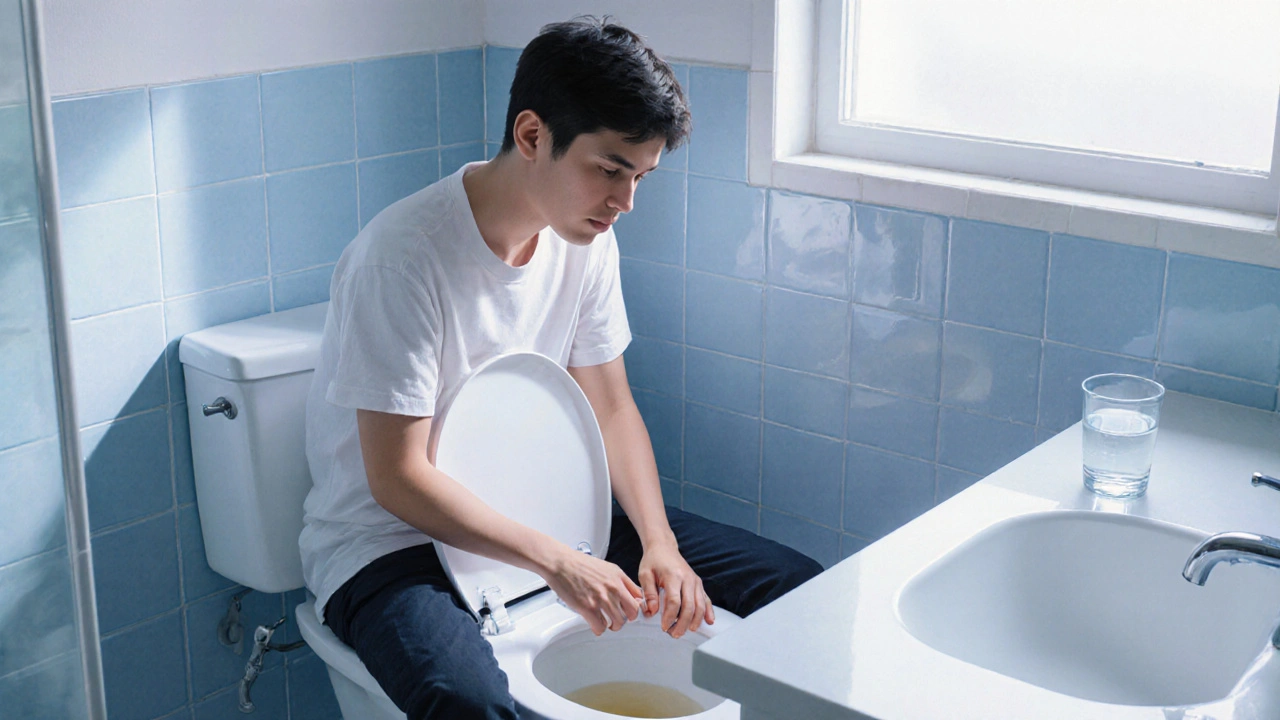Feeling the urge to run to the bathroom every hour? Or maybe you’ve noticed a few drops escaping after you finish? You’re not alone, and most of these issues have easy fixes. Below we break down the most common urinary problems and give you everyday habits that actually work.
First, recognize what’s going on. Urinary incontinence (leakage) often shows up as a sudden wet spot when you laugh, cough, or lift something heavy. Frequent urination – more than eight times a day – can be a sign of overactive bladder or excess fluid intake. Painful urination may hint at an infection or irritation.
One big, often overlooked cause is obesity. Extra weight pushes on the bladder and pelvic floor, making leaks more likely. Studies show that losing just 5‑10% of body weight can cut leakage episodes in half. So, if you’re carrying extra pounds, a modest diet change could be the first step toward better bladder control.
Another hidden factor is hydration quality. Drinking a lot of caffeine or alcohol can irritate the bladder lining, leading to urgency and leaks. On the flip side, not drinking enough water makes the urine concentrate, which can also irritate the bladder.
1. Mindful fluid choices: Aim for 6‑8 glasses of water a day, spread out. Swap sugary sodas for herbal teas or plain water. If you need a caffeine boost, limit it to one cup and drink it early in the day.
2. Pelvic‑floor exercises: The “Kegel” routine isn’t just for athletes. Tighten the muscles you’d use to stop flow, hold for five seconds, then release. Do three sets of ten each day. You’ll feel stronger control within a few weeks.
3. Weight‑care moves: Simple walks, a quick bike ride, or a 15‑minute home workout can shave off pounds without a gym membership. Pair the activity with a balanced plate – half veggies, a quarter lean protein, and a quarter whole grains.
4. Schedule bathroom trips: Train your bladder by going every three to four hours, even if you don’t feel the urge. This trains the muscles to hold more urine and reduces sudden urges.
5. Watch for infection signs: If you notice cloudy, foul‑smelling urine or a burning sensation, call your doctor. Early treatment stops the infection from spreading to the kidneys.
These habits don’t require fancy equipment or a big time commitment. Start with one change – maybe the Kegel routine – and add another each week. Consistency beats intensity when it comes to urinary health.
Remember, your bladder is a muscle, and like any muscle, it responds to training, proper fuel, and the right load. By paying attention to weight, fluid intake, and simple exercises, you can keep leaks at bay and enjoy life without constant bathroom trips.

Learn how dehydration concentrates urine, irritates the bladder, and triggers spasms. Get practical hydration tips, risk tables, and guidance on when to seek medical help.